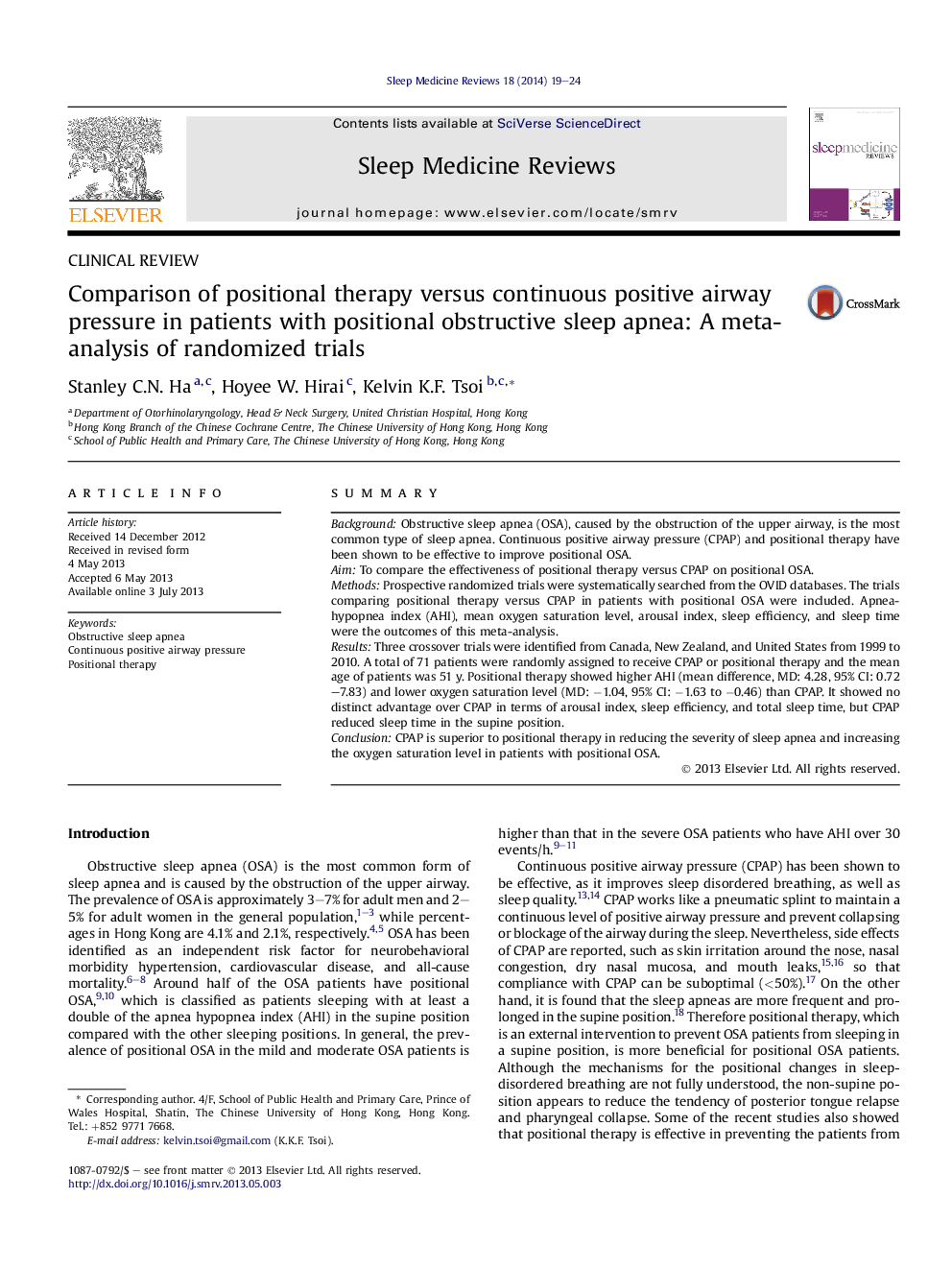| Article ID | Journal | Published Year | Pages | File Type |
|---|---|---|---|---|
| 6042885 | Sleep Medicine Reviews | 2014 | 6 Pages |
SummaryBackgroundObstructive sleep apnea (OSA), caused by the obstruction of the upper airway, is the most common type of sleep apnea. Continuous positive airway pressure (CPAP) and positional therapy have been shown to be effective to improve positional OSA.AimTo compare the effectiveness of positional therapy versus CPAP on positional OSA.MethodsProspective randomized trials were systematically searched from the OVID databases. The trials comparing positional therapy versus CPAP in patients with positional OSA were included. Apnea-hypopnea index (AHI), mean oxygen saturation level, arousal index, sleep efficiency, and sleep time were the outcomes of this meta-analysis.ResultsThree crossover trials were identified from Canada, New Zealand, and United States from 1999 to 2010. A total of 71 patients were randomly assigned to receive CPAP or positional therapy and the mean age of patients was 51 y. Positional therapy showed higher AHI (mean difference, MD: 4.28, 95% CI: 0.72-7.83) and lower oxygen saturation level (MD: â1.04, 95% CI: â1.63 to â0.46) than CPAP. It showed no distinct advantage over CPAP in terms of arousal index, sleep efficiency, and total sleep time, but CPAP reduced sleep time in the supine position.ConclusionCPAP is superior to positional therapy in reducing the severity of sleep apnea and increasing the oxygen saturation level in patients with positional OSA.
